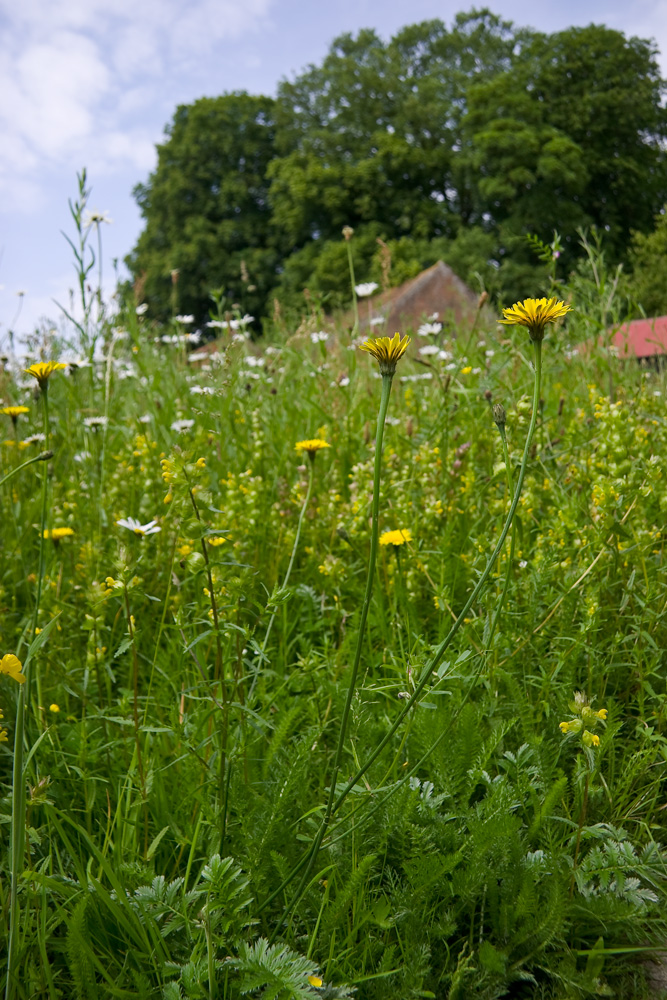Description
Yellow dandelion-type flowers can be difficult to tell apart. Except for some very rare species hawkbits, dandelions and catsears can be distinguished from the rest by the absents of leaves along the flowering stem. Dandelions contain a milky juice, catsears have chaffy scales among their florets and hawkbits have neither. Catsear is most like autumn hawkbit in that both have flower stems that swell towards their tops and both have short scale like bracts along these stems. Catsear is generally taller with a larger flower; the stem is less swollen at the top and the ends of the leaves are rounded not pointed.
Habitat Information
Catsear is a native perennial that can remain in leaf throughout all but the severest of winters. It is a plant of dry, sandy and slightly acidic soils and can be found on a range of habitats including open meadows, pastures, heaths, sand dunes, roadsides and waste ground. It is very tolerant of drought due to its deep root system and its basal rosette of leaves confers a degree of tolerance to gazing pressure. It tends not to be found on very fertile soils or in places prone to waterlogging. Catsear colonises new sites be means of its wind blown seed, but once established it can regenerate both by seed and by vegetative means.
Growing Information
Seed can be sown any time of the year.
Availability
This species is currently only available as a component of meadow mixture EM18.


